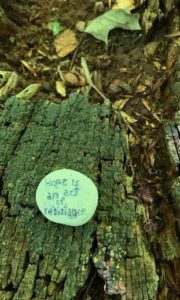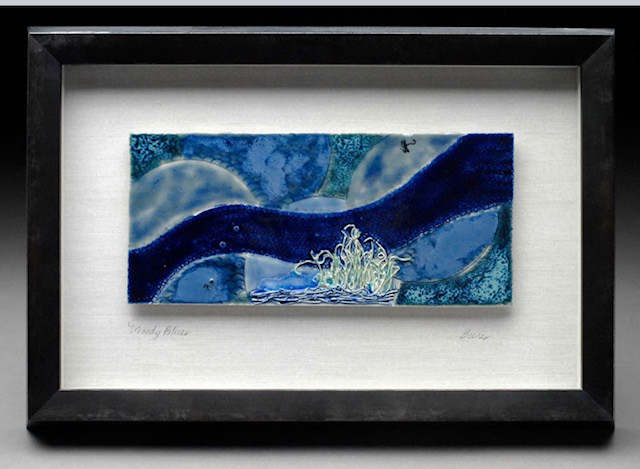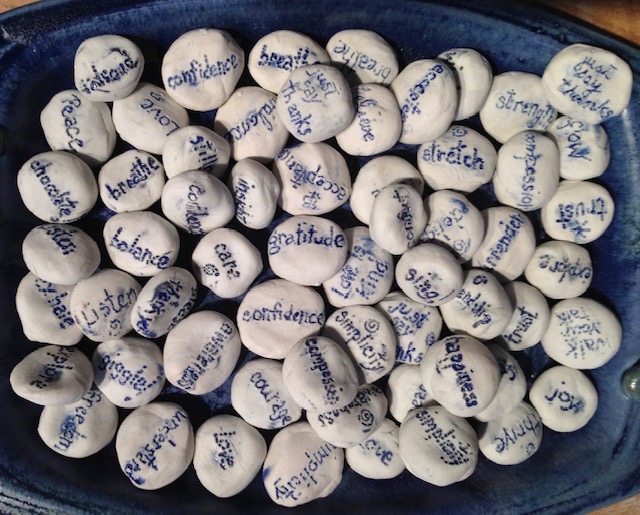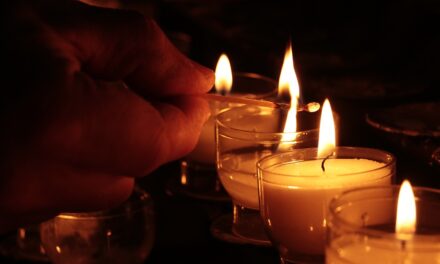Let me tell you the story of the Touchstones.
It was just before 9/11. I had been holding a piece of porcelain in my hand, musing about its texture and how it felt. It was like a stone. I rolled it into a comfortable form and picked up a tool I use for carving tiles. I began to write words on the stones. No thought, just action. I rubbed colorants into the carved areas, as I do with tiles, and fired the pieces.
These little stones are similar to what people all over the world hold: worry stones, beads, and the like. In the business of daily life, we— I —-often lose track of things worth remembering. These little pieces of porcelain became touchstones – reminders – to pay attention. I began carrying them in my pocket. Each time I handle them, they help me remember.
 A year after 9/11, I was in the studio when a couple visiting from New York City came in. In our conversation they mentioned they were planning a walk at dawn, with a group of bagpipers, from Battery Park to the place now known as Ground Zero. The woman wanted to buy a touchstone that had PEACE on it. I gave her a dozen and a half or so, asking her to pass them on.
A year after 9/11, I was in the studio when a couple visiting from New York City came in. In our conversation they mentioned they were planning a walk at dawn, with a group of bagpipers, from Battery Park to the place now known as Ground Zero. The woman wanted to buy a touchstone that had PEACE on it. I gave her a dozen and a half or so, asking her to pass them on.
A week after that, I received an email from a man who had received one of those stones. He wrote that he had been in his office near the Twin Towers on September 11th and that receiving the touchstone was a life affirming experience —a connection with others who cared.
I continue to make them, on and off, when the time seems right to me. I no longer sell these little pieces, rather, I give them away.
I’ve sent them all over the world, often requesting that the recipient keep one and either give the other to a stranger or leave it to be found. They have been left in shops, restaurants, playgrounds, hospitals, museums, libraries, and nature trails. They traveled to the first Women’s March – both in Cleveland, Ohio, and in Washington, DC. I most recently mailed some to Ireland and Sweden.
They mean different things to different people. I once gave a handful of touchstones to a friend whose loved one would be undergoing surgery. On her way to the surgical waiting room, she left them in different public areas of the hospital. A short while later she heard a woman squeal to her companion, “Look at this! Can you believe it? It was right here.”
“It’s a sign,” her companion said, “I knew Grandpa would be okay.”

Example of a Debra Bures tile.
“Moody Blues”. Porcelain tile; hand carved, inlaid glazes, enhanced with fused stained glass







What a lovely and moving piece (peace?), Debra. You have inspired me to do the same. These little gestures hopefully make a small difference in easing the pain of the world and reminding us of what is important. Thank you.
Thank you for your kind words, Barbara. One gesture, one kind act, at a time. It’s how we change the world.